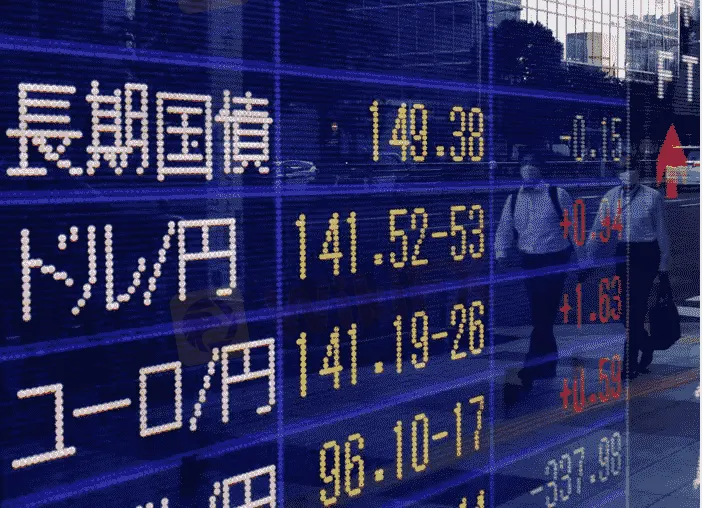简体中文
繁體中文
English
Pусский
日本語
ภาษาไทย
Tiếng Việt
Bahasa Indonesia
Español
हिन्दी
Filippiiniläinen
Français
Deutsch
Português
Türkçe
한국어
العربية
King dollar stomps on yen as U.S. yields rise
Abstract:The dollar hit a 24-year peak against the yen and reached new highs versus the Australian and New Zealand dollars on Wednesday after U.S. economic data reinforced the view that the Federal Reserve will continue aggressive policy tightening.

Economic jitters elsewhere, pushing investors to safety, also supported the U.S. currency.
The dollar soared as high as 144.38 yen in Asia trade, hitting the level for the first time since August 1998, while the euro wallowed below 99 cents after dipping as low as $0.9864 overnight, its lowest since late 2002.
This caused the U.S. dollar index, which measures the greenback against six major peers, to hit a fresh 20-year high of 110.69 early on Wednesday.
The European Central Bank is seen as more likely than not to deliver a massive 75 bps rate hike on Thursday, but these expectations are doing little to support the currency in the face of a battered European economy and Russias decision to keep the key Nord Stream 1 gas pipeline shut indefinitely.
In contrast, a report overnight showed the U.S. services industry unexpectedly picked up last month, supporting the view that the economy is not in recession and giving the Fed leeway for another 75-basis-point rate rise on Sept. 21.
But the moves were most dramatic for the yen, whose tumble, even by its own recent standards, has been precipitous. The dollar has climbed 3.7% from 138.96 yen just since the end of August.
Japans currency is extremely sensitive to moves in long-term U.S. interest rates, and the yield on the 10-year Treasury note climbed as high as 3.365% in Tokyo trading, a level not seen since June 16.
“The speed at which the dollar is appreciating against the yen is getting out of control and is at risk of becoming unanchored,” said Davis Hall, head of capital markets at Indosuez Wealth Management Asia.
“Right now youre drawing in everybody to stop out by throwing in the towel,” he said. “We could reach 148 without (Ministry of Finance) action.”
Japans top government spokesperson, Chief Cabinet Secretary Hirokazu Matsuno, told a news briefing that the administration would like to take necessary steps if “rapid, one-sided” moves in currency markets continue, ratcheting up the rhetoric.
However, many analysts see intervention as difficult.
“Foreign central banks are prioritising dealing with inflation, and cannot afford to worry about exchange rate fluctuations,” said Rikiya Takebe, senior strategist at Okasan Securities.
“Currency intervention or policy revisions by the Bank of Japan are likely to be difficult, and it will not be easy to stop the yen from falling.”
Sterling fell 0.17% to $1.1497, approaching the 2 1/2-year low of $1.1444 reached on Monday, with Britain also entangled in the energy crisis, despite new prime minister Liz Trusss plans for a massive support package.
Back in Asia, many currencies were trading at or around multi-year lows. Chinas yuan sank to a two-year trough, closing in on the 7-per-dollar mark despite steps by authorities to stem its decline.
The onshore yuan weakened to a low of 6.9808, the softest level since August 2020, and the offshore yuan was even closer to the key level, falling as low as 6.9949 per dollar.
The New Zealand dollar dropped to its lowest since May 2020 at $0.5997, and the Singapore dollar declined to the weakest since June 2020 at 1.4107 per greenback.
Cryptocurrency bitcoin slumped to the lowest since June 19 at $18,540, extending a 5% tumble from Tuesday. The overall crypto market capitalisation dropped below $1 trillion once again, having been as high as nearly $3 trillion in late 2021.

Disclaimer:
The views in this article only represent the author's personal views, and do not constitute investment advice on this platform. This platform does not guarantee the accuracy, completeness and timeliness of the information in the article, and will not be liable for any loss caused by the use of or reliance on the information in the article.
Read more

VARIANSE Review: Traders Raise Deposit & Withdrawal Issues and High Commission & Swap Charges
Are you losing both while depositing and withdrawing your capital at VARIANSE? Does the broker give the currency conversion rate excuse for this? Have you been trapped with spreads charged higher than promised? Do you bear steep commission and swap charges at this broker? Traders frequently report these trading issues online. In today’s VARIANSE broker review, we have shared some trading complaints that have grabbed everyone’s attention. Take a look.

Is Fyntura a Regulated Broker? A Complete 2025 Broker Review
Fyntura is a broker accused by many users of posting fake reviews and running paid promotions with influencers to attract unsuspecting traders. Several users have faced withdrawal issues, blocked accounts, and manipulated trades. These are the real complaints and experiences shared by traders online. In this latest Fyntura Review 2025, you’ll learn about genuine user feedback, reported issues, and the broker’s credibility helping you make a better trading decision.

Zetradex Exposed: Withdrawal Denials, Account Freeze & Bonus Issues Hurt Traders
Do you constantly face withdrawal denials by Zetradex? Does the forex broker keep freezing your account and wiping out your capital? Have you also undergone issues concerning the Zetradex no deposit bonus? These trading issues have become apparent as the forex broker allegedly scams traders all over. In this Zetradex review article, we have demonstrated some complaints. Read them to get a feel of what happens to traders here.

Fullerton Markets Review: Traders Allege Profit Wipes and Illegitimate Withdrawal Rates
Have you witnessed constant profit deletion from Fullerton Markets? Has the Saint Vincent and the Grenadines-based forex broker wiped out all your capital after you checked it on Fullerton Markets Login? Do you find the deposit and withdrawal rates abnormal here? These complaints have been grabbing everyone’s attention on Fullerton Markets Review Platforms. In this article, we have shared some of these complaints for you to look at and inspect. Read on!
WikiFX Broker
Latest News
BASF CEO: EU CO₂ Trading Is A "Destruction Mechanism" For European Industry
PINAKINE Broker India Review 2025: A Complete Guide to Safety and Services
Is Inzo Broker Safe or a Scam? An Evidence-Based Analysis for Traders
Is Uniglobe Markets Legit? A 2025 Simple Guide to Its Safety, Services, and User Warnings
Is Forex Zone Trading Regulated and Licensed?
WikiEXPO Dubai 2025 “Welcome Party” Kicks Off Tonight!
He Trusted a WhatsApp Group and Lost RM659,000
Exness Restricted Countries List 2025 Explained
Zetradex Exposed: Withdrawal Denials, Account Freeze & Bonus Issues Hurt Traders
Is Fyntura a Regulated Broker? A Complete 2025 Broker Review
Currency Calculator



